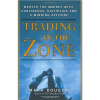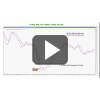Latest Trader Channel Posts
Is It Really Possible To Outperform The Stock Market?
I enjoyed Kevin's talk at the Money Show in November last year - it was clear and precise. It was obvious Barry knew a lot about his topic and I went away excited that it was possible to outperform the stock market.
So recently, I started to follow his example; the FTSE has been rising this year so step 1 is easy!
I then started to look at sectors using Digital Look's Bar Chart tool. I wasn't sure what time period to use - I assume it shouldn't be too short when a true trend might not have time to show itself. On the other hand, a too long period would risk missing a lot of the hopeful rise. So I generated five bar charts:
1 year: Support services +130% with Oil Equipment, Services and Distribution +65%
6 month: Oil etc +90%, Chemicals +60%, Support Services +10%
3 month: Alternative Energy +90%, Oil etc +70%
30 day: Oil etc +70%, Alternative Energy +18%
I found all this rather confusing until I charted the Oil etc sector over a year which showed Schlumberger flat at under 100 for nearly the whole year until it suddenly jumped to 540 - rather distorting!
I'd be very interested in your comments! Perhaps the thing to do is to, somehow, exclude Schlumberger it has been distorting
Best Regards
Nick











Answers
Nick,
I'm afraid it's the wrong question. If the stock market goes down10% and you only go down 9%, you have beaten the market but you have also lost 9%. Hopeless.
The question you should be asking is this: what do I [personally] need to make to justify taking some risk with my money? A building society typically offers about 2.5%, so what return would tempt you out of the safety of cash?
For me the answer is 3x. If I think I can make 7.5% this year then I don't mind whether the market goes down or up 10%; it's not a competition, I don't set out to beat anything or anyone.
The other point I want to make is that you have to think about time-frame. I declared myself a full-time trader on 26th September 2005. Since then the FTSE has increased just 15%, an average of just over 2% a year. Not a big hurdle eh!
I hope that's food for thought.
Susan
http://www.facebook.com/SusanMarmorPrivateInvestorEducator?ref=hl
Susan
Many thanks for taking the time to reply and I agree with your comments.
Nick
Hello Nick,
Thank you for your question.
n.b. You can view Nick's charts here.
There is a reprise of the Money Show Presentation, to which Nick refers, here.
Your approach is perfectly correct. I cannot say how accurate Digital Look's relative strength analysis is but you may be able to carry out slightly more rigorous analysis if you can download the raw price data into Excel or use a package such as Sharescope or similar.
I prefer to trade US stocks in this particular strategy because the universe of US stocks is much larger and it is far easier to obtain the data upon which to perform the analysis.
By the way, as I hope that I made clear in the presentation, this is a top-down strategy, which means that the overall market must be rising, as must the top sectors, as must the top stocks within these sectors. We are talking here about a pure momentum play. In the case of a falling market, or the top sectors not outperforming the market, long trades are not taken.
The idea is to be out of stocks completely in a falling market.
One alternative that I discuss in my presentation to deal with this scenario is to rotate in bonds. Another option, if your broker allows it, is to short the weakest stocks in the weakest sectors in a falling market. Once again, this is far easier to do with US stock that it is with UK stocks.
From your analysis, it would seem that the Oil Equipment sector has been outperforming the FTSE350 for most of the year. I have used the Digital Look website in order to generate three-month and one-month charts of the sector, with the top three stocks in the sector (excluding Schlumberger) plotted.
You can view these plots here.
Clearly, Greka Drilling is the stock with most momentum. As I mentioned in my presentation, this is not an automatic buy recommendation for Greka. It is important to apply your normal selection criteria before taking the trade but the analysis would suggest that this is one of the best trading opportunites at the present time.
In order the illustrate my own method, I have also included my analysis of the US sectors done last weekend. I use one day, one week, one, three and six months %ROC for my analysis.
The Construction & Materials Index continues to be the standout sector; it has more than doubled over the past year. Likewise, the Media sector has been a strong performer. However, as I am already invested in both sectors, I looked at the Banks sector this time around for likely candidates.
This analysis is also shown (in reverse order, so strongest stocks are at the bottom). I looked at the top few stocks and decided upon Bank Of America, chart attached in the above link. ESRA suggests that BOA is strengthening and I particularly like the fact that the price is at the lower trendline of a rising channel. This means a very low-risk play because I will place my stop loss just beneath the trendline. I went long BOA at 11.40 on Monday with a stop at 11.15. My target is the opposite trendline.
I hope it helps.
Hello Kevin
Many thanks for your long reply to my question; it has considerably helped my education in trading and I appreciate the time you have devoted. I shall watch your BOA trade with interest.
Your TIC website is friendly and well laid out so I'm pleased to have discovered it recently; it's clear you have worked in IT!
Nick
Many thanks for your feedback, Nick. Much appreciated.
I have now moved my BofA stop to breakeven at 11.40 and so will look for another stock in the sector if the Banking Sector is still showing good External Strength next weekend.
In general, I don't like to be exposed to a potential loss on more than a couple of stocks in each sector. Once I have moved my stop up to b/e or beyond, I will then look for another opportunity.